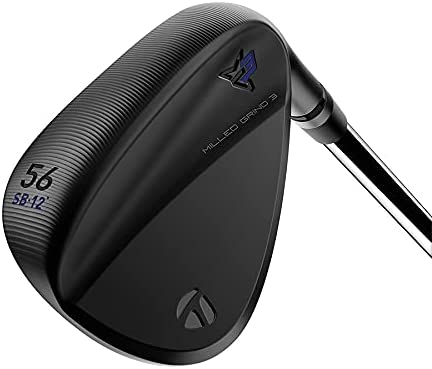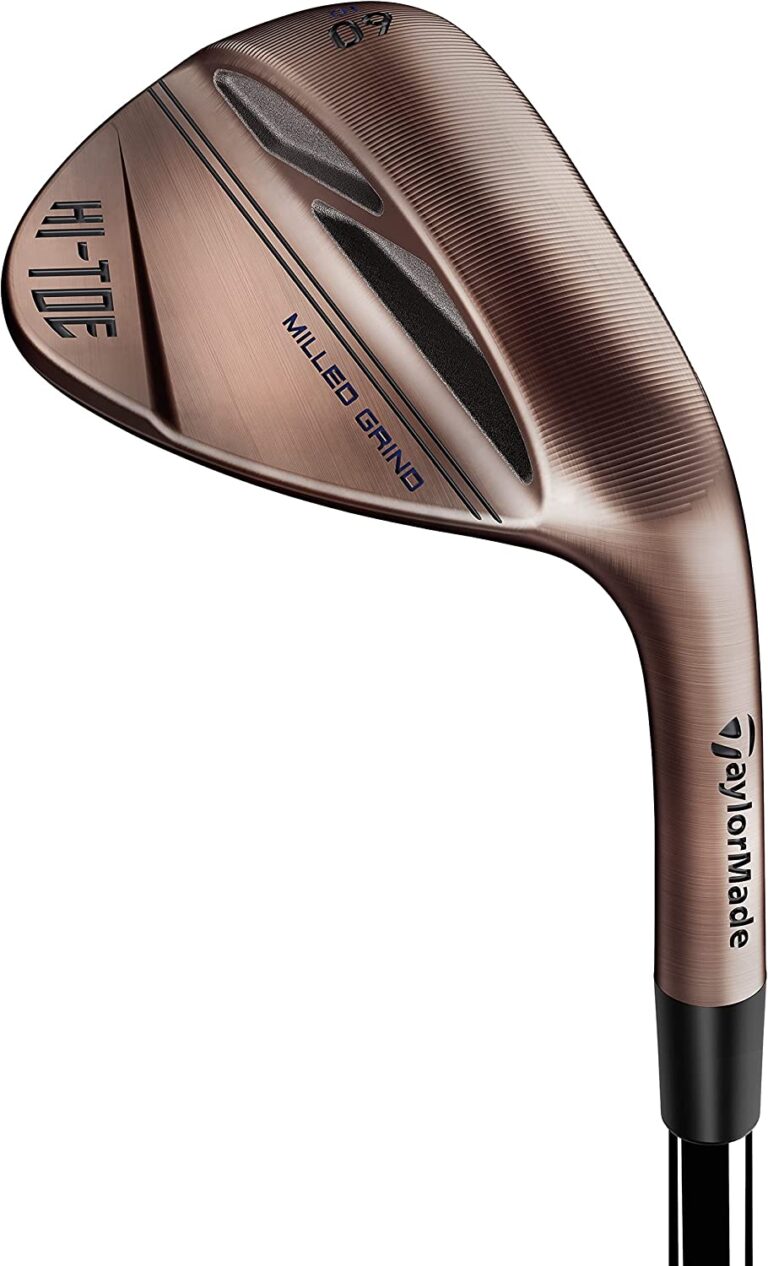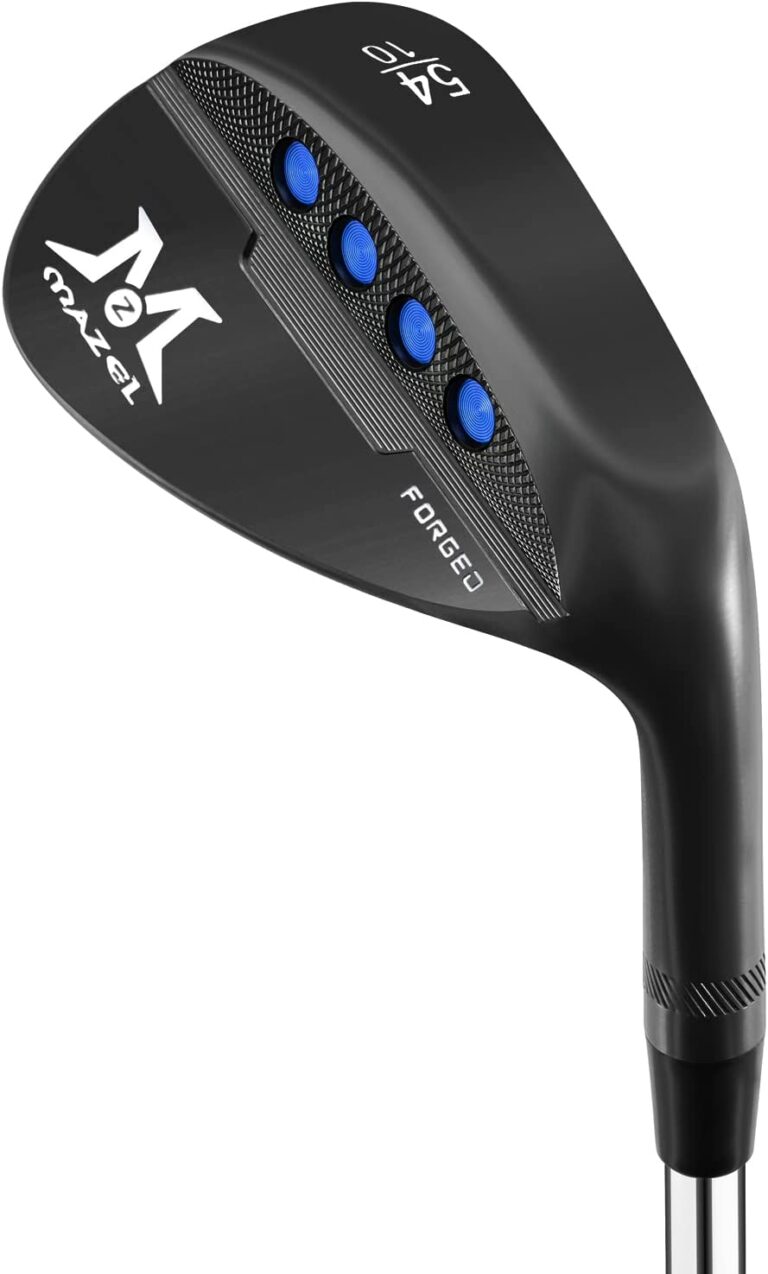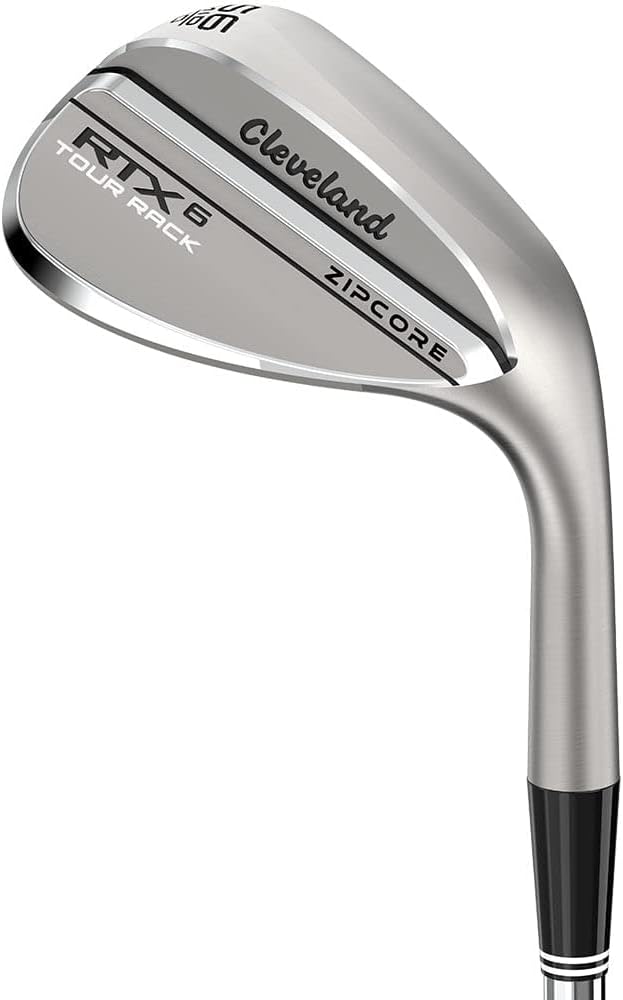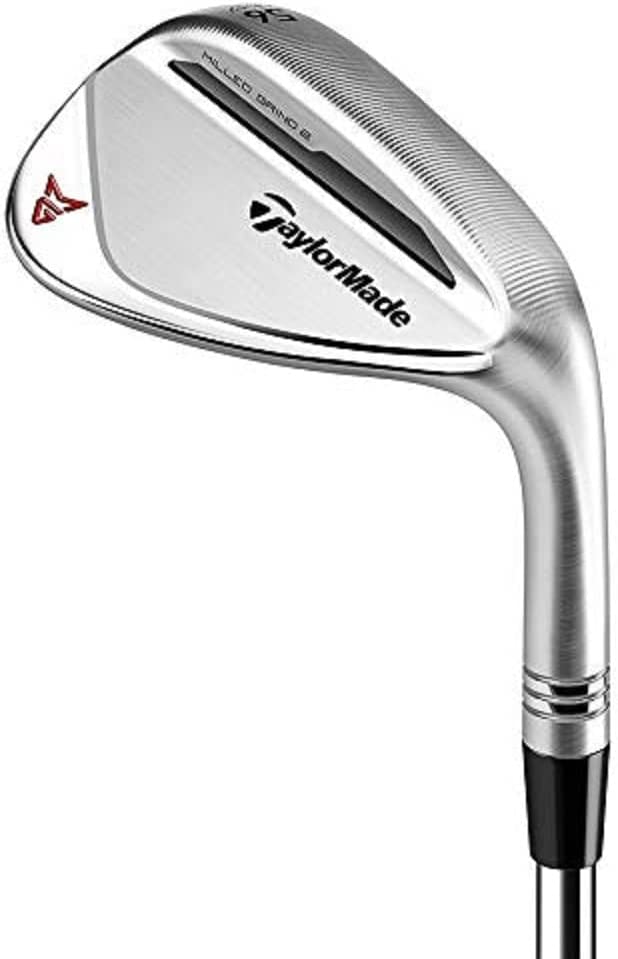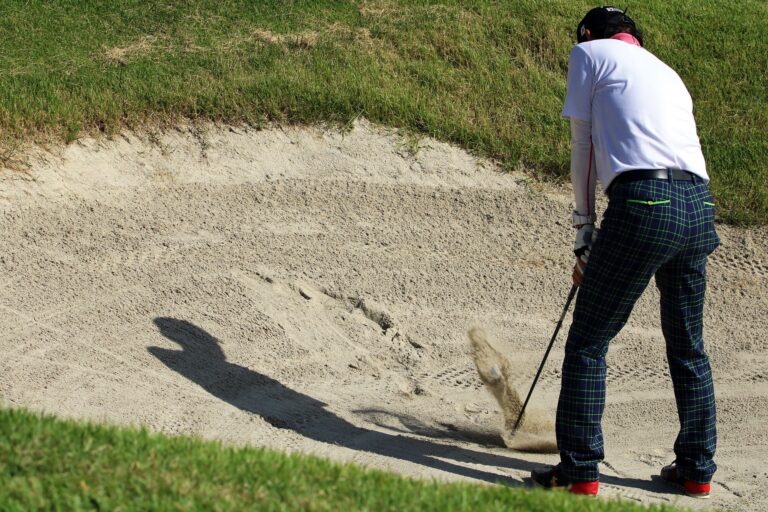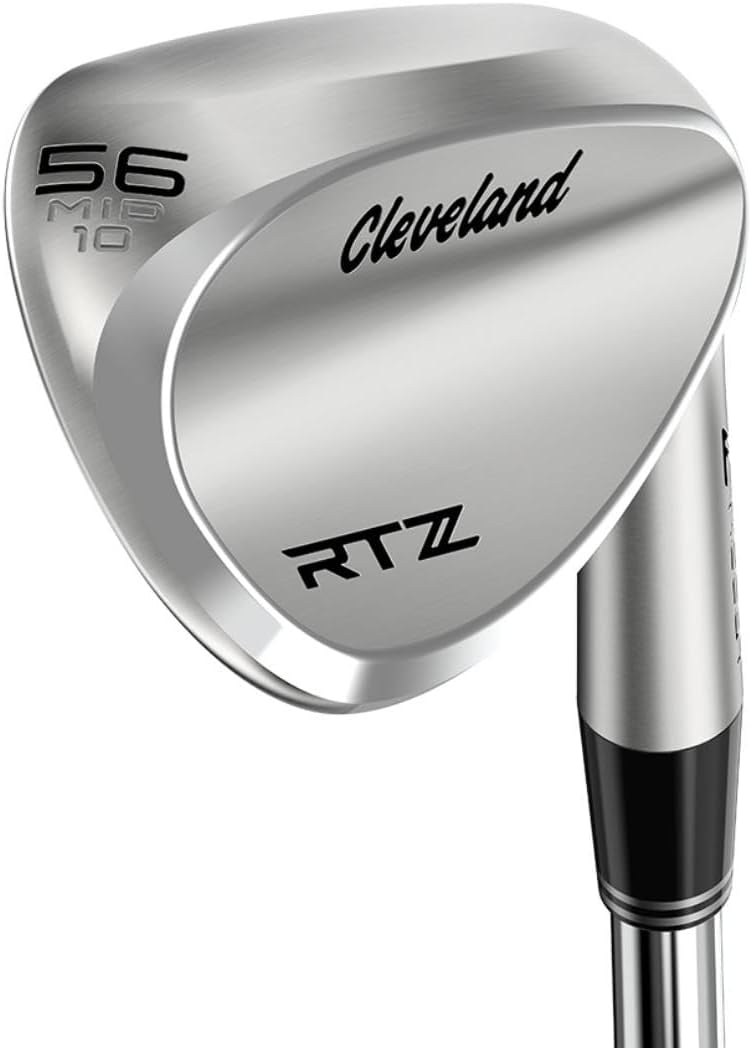56 Degree Wedge: What It Is and How to Use It
Well, folks, let’s face it, golf is a tough game! It’s no walk in the park. It’s a game that demands precision, practice, and, of course, the right equipment.
And speaking of equipment, today we’re going to delve deep into the world of the much-raved-about 56 degree wedge. Get ready to elevate your game to the next level!
What is a 56 Degree Wedge?
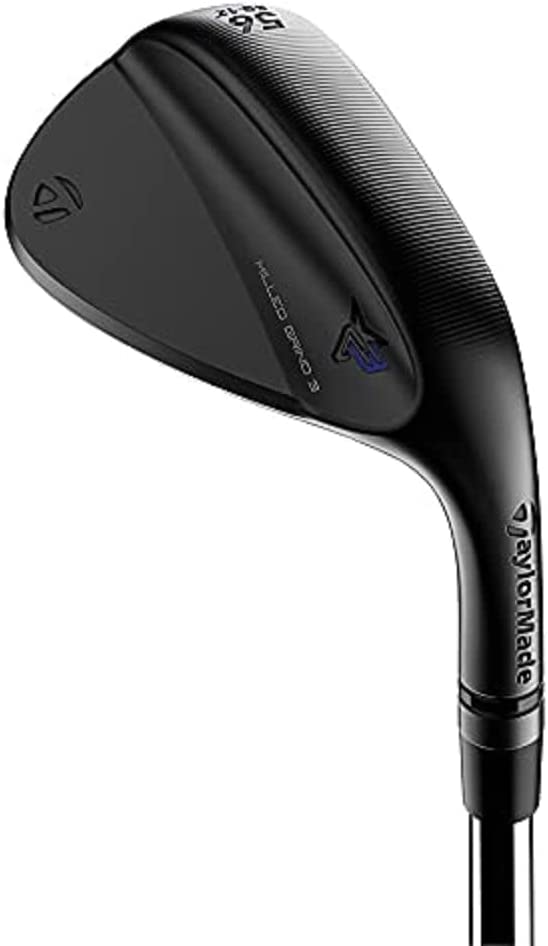
It’s time to clear the air. So, what exactly is a 56 degree wedge? In the simplest of terms, a 56-degree wedge is a type of golf club.
More specifically, it’s part of the wedge family, known for its loft – the angle of the clubface that controls trajectory and affects distance. A 56-degree wedge is usually the middle ground between a pitching and a sand wedge.
Understanding the Role of a 56 Degree Wedge in Your Golf Bag
A Jack of All Trades
When it comes to your golf bag, think of the 56 degree wedge as your multi-purpose tool, your jack of all trades. Its wide range of applications means it can step up to the plate for a number of different shots.
Bunker Busting.

Let’s be honest, no golfer likes to find themselves in a bunker. It’s like being stuck between a rock and a hard place. However, with a 56 degree wedge in hand, escaping the sandy depths becomes a much less daunting task. Thanks to its perfect blend of loft and bounce, this wedge is an excellent choice for those dreaded sand shots.
Close Quarters Combat
When you’re in close proximity to the green, a 56 degree wedge is often the weapon of choice. It’s tailor-made for those delicate chip shots where precision is paramount. It’s also an invaluable tool for pitch shots, where you need to cover a bit more distance while still maintaining control and accuracy.
Full Swing Situations
While it’s true that wedges are typically associated with short game situations, don’t underestimate the power of the 56 degree wedge for full-swing shots. When you’re about 80-110 yards from the green, this wedge can be your best friend. It provides enough distance while ensuring you have better control over your shot compared to longer clubs.
In short, the 56 degree wedge is a versatile beast, ready to step in and deliver when called upon. So the next time you’re out on the course, don’t forget to give this trusty club the credit it deserves!
Getting a Grip on the 56 Degree Wedge:
The Art of the Hold.
The key to mastering the 56-degree wedge, or any golf club for that matter, lies in the grip. It’s as fundamental as the ABCs, yet it’s an area where many golfers trip up.
An overly tight grip can strangle your swing, leading to a lack of control and a loss of distance. On the other hand, a grip that’s too loose could lead to inconsistency and a lack of power. So, how do you find the sweet spot?
It’s all about balance. Your grip should be firm, yet relaxed – enough to maintain control without restricting the natural flow of your swing.
Swing Mechanics – The Nuts and Bolts.
Swinging a 56 degree wedge isn’t about brute force – it’s about finesse and technique. The swing mechanics for this club are all about control and precision.
Firstly, the backswing should be smooth and controlled, allowing you to set the pace of your swing. Overdoing it can lead to a loss of control and an off-target shot.
Secondly, the downswing is where the magic happens. It should be a natural continuation of the backswing, maintaining the same rhythm and tempo.
Lastly, the follow-through is just as crucial. It’s not merely a ‘wrap-up’ phase of your swing, but a key part of the swing sequence that affects the ball’s flight and spin.
Remember, when it comes to the 56 degree wedge, it’s not about swinging as hard as you can, but about swinging smart.
Stance and Ball Position.
Your stance and ball position plays a pivotal role when using a 56 degree wedge. A narrower stance with the ball positioned centrally (or slightly forward) can help optimize the loft of the club and promote a clean, crisp contact with the ball.
Remember, practice makes perfect. The more you practice your grip, stance, and swing mechanics with the 56 degree wedge, the more you’ll see improvements in your game. It might seem like a tall order, but once you get the hang of it, you’ll be chipping and pitching like a pro in no time!
Perfecting Your Game with the 56 Degree Wedge.
Precision in Chipping and Pitching.
In the game of golf, precision often trumps power, and this is especially true when using a 56 degree wedge. This club is tailor-made for chipping and pitching, where accuracy is the name of the game.
When chipping, the goal is to get the ball into the air with enough loft to clear any obstacles, but not so much that you lose control. A well-executed chip with a 56 degree wedge can set you up for an easy putt, bringing you one step closer to victory.
Pitching, on the other hand, requires a bit more finesse. These shots are generally longer than chips but shorter than full swings. With a 56 degree wedge, you can execute a pitch shot with precision, placing the ball closer to the pin and potentially saving you from a sticky situation.
Nailing Your Approach.
The approach shot is a pivotal moment in any hole. It’s your last full swing before the putting begins, so it’s crucial to get it right. Enter the 56 degree wedge. This club can be your secret weapon when you’re within 100 yards of the green.
It provides the perfect blend of distance and control, allowing you to place your ball on the green with precision, setting up an easier putt.
Escaping the Bunker.

Bunkers can be a golfer’s worst nightmare, but they don’t have to be. With a 56 degree wedge, escaping the sand becomes a much less daunting prospect.
The key is to use the loft of the club to your advantage, allowing the club to do the work for you. With a little practice, you can turn a bunker from a hazard into an opportunity.
Improving Shot Versatility.
One of the biggest advantages of the 56 degree wedge is its versatility. This club isn’t a one-trick pony.
It can be used for a variety of shots, from full swings to delicate chips, pitches, and bunker shots. The more you use your 56 degree wedge, the more you’ll understand its capabilities and how to use them to your advantage.
In the end, perfecting your game with a 56 degree wedge comes down to practice and understanding. Once you’ve got a handle on the basics, it’s all about fine-tuning and adapting to the situation at hand.
So grab your 56 degree wedge, hit the course, and watch as your game goes from strength to strength!
Choosing the Right 56 Degree Wedge:
Factoring in Your Skill Level.
When it comes to choosing the right 56-degree wedge, your skill level is an important consideration. This club is known for its versatility, making it an excellent choice for players of all skill levels.
However, different brands and models may be more suited to different players. Beginners may find a wedge with a larger clubface and more forgiveness beneficial, while more experienced players might prefer a wedge that offers more control and the ability to shape shots.
The Importance of Bounce and Grind.
In the world of wedges, terms like ‘bounce’ and ‘grind’ get thrown around quite a bit. But what do they mean and why are they important when choosing a 56 degree wedge?
Bounce refers to the angle between the leading edge of the clubface and the lowest point of the club’s sole.
A higher bounce is beneficial for soft conditions or fluffy lies, as it helps prevent the club from digging into the ground. Conversely, a lower bounce is better for hard conditions or tight lies.
Grind refers to how the sole, or bottom of the club, is shaped. Different grinds can affect the club’s performance and can help players deal with various course conditions or execute specific types of shots.
Knowing your typical playing conditions and your personal swing characteristics will help you choose a wedge with the right bounce and grind for your game.
Considering Shaft Material and Flex.
The shaft of the 56 degree wedge also plays a significant role in the club’s performance. Shafts can be made of various materials, with steel and graphite being the most common. Steel shafts are heavier and offer more control, while graphite shafts are lighter and can help increase swing speed.
Shaft flex, or the amount the shaft bends during a swing, is another crucial factor. Choosing the right flex based on your swing speed can maximize your distance and accuracy.
Fitting and Customization.
Finally, consider getting a professional club fitting. A properly fitted 56 degree wedge can significantly improve your performance by ensuring that the club’s specifications match your swing characteristics.
Customization options, such as adjusting the lie angle, loft, or swing weight, can also be beneficial. These adjustments can help make the club feel more comfortable in your hands and can help optimize your ball flight.
Remember, the right 56 degree wedge can make a world of difference in your game. So take the time to choose wisely, and you’ll reap the benefits on the golf course!
Caring for Your 56-degree Wedge.
Just like any other piece of equipment, a 56-degree wedge requires a certain level of care and maintenance to keep it performing at its best. Here’s a rundown of what you need to do to keep your wedge in tip-top shape.
Regular Cleaning
The first step in caring for your 56-degree wedge is regular cleaning. During a round, your club can collect dirt, grass, and other debris, which can affect its performance.
After each shot, it’s a good habit to wipe down the clubface with a towel. This removes any immediate debris and prevents buildup.
After each round, a more thorough cleaning is in order. Warm soapy water and a soft brush can be used to clean the grooves on the clubface. These grooves are critical in generating spin and control, so it’s essential to keep them clean.
Once the club is clean, dry it thoroughly to prevent rusting.
Checking for Wear and Tear.
Like any piece of equipment, golf clubs aren’t built to last forever. Regular checks for wear and tear can help you identify when it’s time for a replacement.
Pay particular attention to the clubface. If the grooves are worn down, they won’t be as effective at imparting spin on the ball.
The grip is another area that can show signs of wear. If it’s becoming slippery or if it’s worn smooth, it may be time for a replacement.
Proper Storage.
Proper storage is key to prolonging the life of your 56-degree wedge. When not in use, clubs should be stored in a cool, dry place. Extreme temperatures and humidity can damage the club over time.
Also, use head covers to protect your clubs during transportation. This can prevent unnecessary dings and scratches that can occur from clubs knocking against each other.
Seasonal Maintenance.
At the end of each golf season, it’s a good idea to give your clubs a deep clean and check for any necessary repairs. This is also a good time to re-grip your clubs if necessary. Starting a new season with fresh grips can make a world of difference.
Remember, a well-cared-for 56-degree wedge isn’t just about aesthetics. Regular maintenance ensures the club performs as it should, helping you to play your best game on the course. Happy golfing!
FAQs about the 56 Degree Wedge.
Here are some frequently asked questions and our expert answers about the 56-degree golf wedges.
Why should I use a 56-degree wedge?
A 56-degree wedge is versatile, making it a great option for a variety of shots including chips, pitches, and bunker shots.
Is a 56-degree wedge suitable for beginners?
Absolutely! The 56-degree wedge is a forgiving club that can be a game-changer for beginners learning to navigate different shot types.
How is a 56-degree wedge different from other wedges?
The difference lies in the loft. A 56-degree wedge typically has more loft than a pitching wedge but less than a lob wedge, making it a versatile choice.
What kind of shots can I play with a 56-degree wedge?
This club is great for full shots from the fairway, bunker shots, chips, pitches, and more.
How far should I be able to hit with a 56 degree wedge?
While distance can vary based on individual skills and swing speed, on average, golfers can hit a 56-degree wedge about 80 to 110 yards.
Should I always use a 56 degree wedge in a sand trap?
While it’s a popular choice, the best club for a sand trap depends on the specific situation, including the lie of the ball and the distance to the hole.
Conclusion
A 56-degree wedge is a tool that can transform your golf game if wielded correctly. Its versatility and wide range of applications make it an invaluable asset in your golf bag. Whether you’re a seasoned pro or a greenhorn, understanding and mastering this club could be your secret to shaving strokes off your score.
So, step up, grab that 56-degree wedge, and show that golf course who’s boss!

